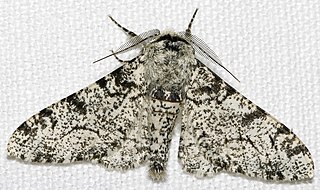The problem with witnessing evolution happening is that it’s slow. VERY slow. Not as slow as mountain formation and continental drift but nevertheless really, really slow.
Let’s just recap. Evolution is the slow change in form of a species over multiple generations. Each generation perhaps changes a little, tiny, almost invisible amount but after many generations a noticeable change can be seen.
The changes happen because of the way that plants and animals reproduce. Almost all of them reproduce sexually. Two parents share their genetic information to produce a child. Some of the mother’s characteristics show up in the child, some of the father’s but occasionally there’s an error in the mix and strange things emerge, some of them good, others bad. Every so often one crops up that gives the child an advantage, the sort of advantage that will improve his or her chances of reproducing and passing on that advantage to their offspring. Nature, in effect, selects that child to pass on his or her genes more than a child without the advantage. That’s what Darwin called Natural Selection.
The problem with witnessing human evolution is that most of us don’t even consider making babies for at least 20 years. Even those of us who are VERY lucky will only ever see perhaps 7 generations in our family. I for instance met my great-grandparents and with luck I might meet my own great-grandchildren but seven generations isn’t enough for any major change in form to emerge.
That’s why geneticists are forced to choose other species to examine, ones that breed much more rapidly. Their favourite is the fruit fly. That’s because they can breed only 10 days after birth, allowing dozens of generations to be examined in a year. Also, even though they have an extremely simple genetic make-up with only 4 chromosomes (humans have 23) they nevertheless share most of the genes for disease that humans possess.
Perhaps the most famous example of evolution actually being observed was the Peppered Moth. This was a common moth in England that was normally white with black speckles but a tiny proportion were born much darker. The paler moths were clearly at an advantage when they rested on the pale, lichen-covered trees they called home and the darker ones never lasted very long before predatory birds had them for lunch.
As the Industrial Revolution began and the countryside became more and more polluted it was noticed that over many generations the moths gradually changed their coloring to match the increasingly darkened environment. Eventually 98% of the moths were born black. Clearly the moths with the paler coloring became increasingly visible to the birds that ate them and the ones who happened to be darker were more likely to avoid the birds. The darker ones passed on this genetic advantage to their children and over time almost the entire population became dark.
 |
| The Peppered Moth: Before (Picture taken by Olaf Leillinger) |
 |
| The Peppered Moth: After (Picture taken by Olaf Leillinger) |
Similar effects have been seen in fish, for instance the South American guppy, again with a fairly rapid change in their camouflage. As with the Peppered Moth camouflage is a great way of staying alive, or of being eaten by a predator if it fails, before you get a chance to pass on your genes.
What about humans? Are genetic mutations going on right now that might give some people an advantage? Certainyly. There’s a town called Limone sul Garda in Italy where a small proportion of the community have a mutated version of a protein that protects them against cardiovascular disease. They’ve even been able to trace the mutation back 300 years to the original “mutant”, a man called Giovanni Pomarelli. Drug companies are doing their best to make an artificial version of the protein that you and I can take. It’s either that or we send our children to that town in Italy to make babies with Signor Pomorelli’s descendants and get the gene into our family as well.
Sources
For a good introduction to evolution see the Wikipedia page here. That page contains a summary of Natural Selection but there's a fuller description here.
If you want to know more about the fruit fly see the Wikipedia page here. For details on their disease gene similarity to humans see here.
There's a very good summary of the evolution of the Peppered Moth here. Details of the micro-evolution of the South American guppy can be seen here and a profile of the biologist concerned, John Endler here.
Finally you can see details of the fascinating advantageous mutation in Italy here and here.
No comments:
Post a Comment